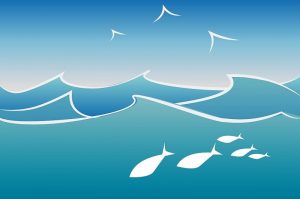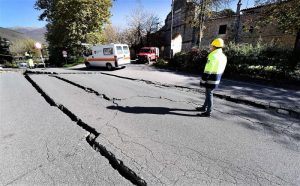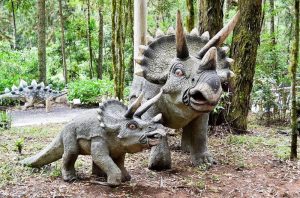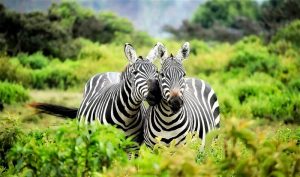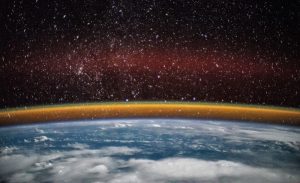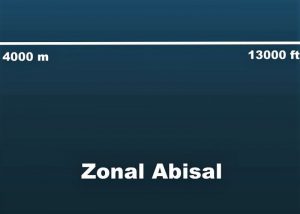Hydrosphere
Water is the most abundant substance on the Earth's surface. Approximately 1.4 billion cubic kilometers of water in liquid and frozen form make up the oceans, lakes, streams, glaciers, and groundwater found there. It is this enormous volume of water, in its various manifestations, that forms the discontinuous layer, which encloses much of the earth's surface, known as the hydrosphere.
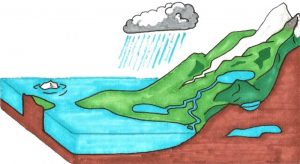
Related topics
Atmosphere, biosphere, exosphere, geosphere, thermosphere, water resources, hydrological cycle
What is the hydrosphere?
It is a large mass of water that is part of our planet and which covers three quarters of the earth. It is the basis and foundation for all the living beings that inhabit the planet.
The hydrosphere is the total amount of water that exists on earth and this includes water that is found on the surface of the planet, either underground or in the air and can be liquid, vapor or ice.
Characteristics of the hydrosphere
The main characteristics of the hydrosphere are as follows:
- It is the layer that surrounds the earth.
- The water within it circulates continuously changing its physical state.
- It needs the sun to be able to make changes in water status.
- The salinity of the seas is 35 gr/l.
- Its temperature can vary depending on latitude and depth.
- Its density depends on the salinity.
- The gases found in water are the same as those found in air.
How the hydrosphere was formed
The hydrosphere was formed due to condensation and solidification of water vapor in the primitive atmosphere, due to the high temperatures that caused the water to be in the form of vapor. It was formed approximately 4600 million years ago.
Composition
The hydrosphere is formed by all the waters of the earth including:
- Liquid water, such as from oceans, seas, rivers, lakes, streams and groundwater.
- Solid-state water in Antarctica and the Arctic, and in glaciers.
- Gaseous water, found in the atmosphere, such as water vapor.
The greatest source of water on the planet is the ocean, which constitutes all salt water and at the same time, is the greatest source of water vapor. In the ocean, there are at least 77 important elements such as sodium and chlorine, magnesium and bromine, which are commercially exploited from seawater.
Although not from seawater itself, but beneath it, from the seabed of the Central Pacific, important minerals such as nickel, copper, cobalt, zinc, chromium, uranium, wolfram and lead have been found.
Distribution
As mentioned above, the largest amount of water is located in the oceans and seas. Much of the water that is fresh is found as ice and is also in groundwater. The water in rivers and in the atmosphere is much smaller than the rest of the planet’s water. There is a distribution for the hydrosphere, and this is it:
- Oceanic waters
- Seas
- Inland waters
- Groundwater or phreatic
- Lentic or lacustrine waters
- Current or Lotic Waters
Properties
The molecule that makes up water is formed by two atoms of the chemical element known as Hydrogen, which are attached to the element Oxygen. The chemical formula of water is H2O. The way the atoms join together, or create the structure of the molecule, produces that water has fundamental properties for the development of life on Earth.
Function of the hydrosphere
The hydrosphere has the following functions:
- It regulates the temperature of the planet by transporting energy by means of sensible heat and latent heat.
- It is responsible for the hydrological cycle of the planet.
- It produces the evaporation of water through the sun’s rays.
- It supplies water necessary for life.
- It allows life to develop on the planet.
Movements
We know that the hydrosphere is the liquid layer that surrounds our planet and covers almost three quarters of its surface. These masses of water are in constant movement and are related to the rotation and translation movement of the planet and the energy of the sun.
The main movement of the hydrosphere is the hydrological cycle which consists of three different aspects: evaporation, condensation and precipitation. It shows how water is in constant movement thanks to the sun and the force of gravity. Evaporation will depend on the amount of energy supplied by the sun and depends on atmospheric pressure, temperature and air currents. Condensation occurs when air that is filled with water vapor is cooled. Precipitation is the fall of water that comes from condensed vapor in clouds, and that falls on seas and continents, by the effect of gravity.
Ocean movements and inland water movements
Inland waters form a very important part of the hydrological cycle because they will always reach the sea and for this reason they are in constant motion. Ocean movements are always constant and never stop. Two important movements take place in the sea, one is the one that transfers marine waters towards other places, which are undulations that cannot displace great quantities of water, and then, we have the tides and the waves. Tides are changes in water levels caused by the attraction of the moon and the sun, and waves are undulations produced by the wind.
Importance of the hydrosphere
Water is the source of life and without it, it would be practically impossible to live. From protecting our environment to allowing humans and animals to survive, it plays a major role in the life cycle. Another important aspect of the hydrosphere is the water cycle, which is vital to all living things.
Contamination
Water is polluted when its natural state is affected and modified, and it no longer has the necessary conditions for the uses it had. The causes of pollution are many, among them we can mention:
- Waste from livestock and agricultural exploitation
- Wastes which are discharged into urban waste water
- Mining exploitation
- Industrial discharges
- Radioactive particles
- Biological pollutants
How to cite this article?
Briceño V., Gabriela. (2019). Hydrosphere. Recovered on 3 January, 2025, de Euston96: https://www.euston96.com/en/hydrosphere/



